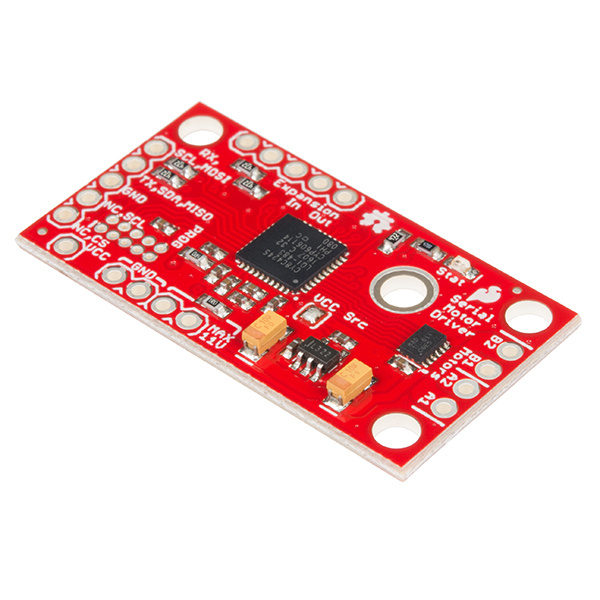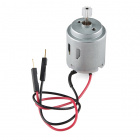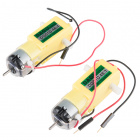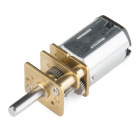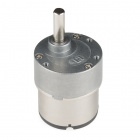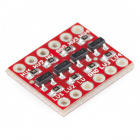Serial Controlled Motor Driver Hookup Guide
Introduction
The Serial Controlled Motor Driver (abbreviated SCMD for the rest of this guide) is a DC motor driver that's been designed to drive small DC motors with ease. It can be commanded by UART, I2C, or SPI communication, and it can drive a constant 1.2A load per motor (peak 1.5A) at 11V. Need more than two motors? Chain multiple SCMDs together and command them through the same serial interface. Need more current? Each board's output can be bridged to allow double current.
SparkFun Serial Controlled Motor Driver
ROB-13911This driver board was designed to be affordable, compact and have more features than previous versions of serial-controlled motor drivers. Its main advantage is the variability of drive levels making fine control adjustments a possibility.
Features:
- 1.5 A peak drive per channel, 1.2 A steady state
- Operates from 3 to 11 volts with 12v absolute max
- 3.3v default VCC and logic
- Max VCC in of 5.5v
- 127 levels of DC drive strength.
- Controllable by I2C, SPI, or TTL UART signals
- Direction inversion on a per motor basis
- Global Drive enable
- Expansion port utilizing I2C, allows 16 additional drivers
- Exposed TO-220 heat sink shape
- Several I2C addresses, default UART bauds available
- Bridgeable outputs
- Optional fail-safe and diagnostics available.
- Configurable expansion bus bit rate to 50, 100, or 400 kHz.
- Configurable expansion bus update rate from 1ms to 255ms, or by command only
Covered In This Tutorial
This tutorial covers basic usage of the motor driver. It shows how to connect it to I2C, SPI, or UART at 3.3V levels, and how to attach more drivers to the controller and control them all independently. It also shows some common motors that can be used without heatsinks.
Required Materials
This tutorial explains how to use the Serial Controlled Motor Driver Breakout Board with an Arduino or direct serial. To follow along, you'll need the following materials:
- Redboard 328p board or 3.3V FTDI Basic -- to communicate with the SCMD.
- Some DC motors, such as:
Standard Gearmotor - 303 RPM (3-12V)
ROB-12147Check out our entire offering of DC motors:
Suggested Reading
If you aren’t familiar with the following concepts, we recommend you read over these tutorials before continuing.
